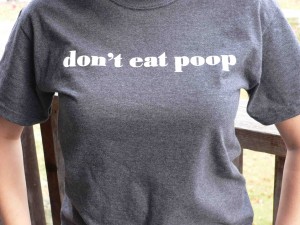 Vik was in his late 20s, blood started appearing in his stool. He found himself rushing to the bathroom as many as nine times a day, and he quit his job at a software company.
Vik was in his late 20s, blood started appearing in his stool. He found himself rushing to the bathroom as many as nine times a day, and he quit his job at a software company.
He received a diagnosis of severe ulcerative colitis, an inflammatory condition of the colon. Steroids, which suppress inflammation, didn’t work for him. Sulfasalazine suppositories offered only the slightest relief. A year and a half after his diagnosis, Vik’s gastroenterologist warned him that because his disease was poorly controlled, he risked developing a condition called toxic megacolon: His inflamed intestines might rupture, leading to blood infection, septic shock or death.
The doctor recommended infusions of cyclosporine, a powerful immune-suppressant drug. Vik looked it up and learned that the drug, often given to transplant recipients, in rare instances can increase the risk of fatal infection and certain cancers. And if cyclosporine didn’t work, the next intervention would probably be the surgical removal of his colon. Vik might have to wear a colostomy bag for the rest of his life.
“I had a feeling there had to be a better way,” he told me recently. (Worried about being stigmatized, Vik asked that I identify him only by his first name.) He began researching ulcerative colitis and discovered that the prevalence of inflammatory bowel disease — an umbrella term that includes both ulcerative colitis and Crohn’s disease — had increased markedly in the United States over the 20th century. Yet the disease was less common in the developing world. He learned that exposure to dirt and unsanitary conditions early in life seemed to protect against these and other inflammatory diseases later. And then he encountered an explanation for the correlations in the research of a scientist named Joel Weinstock.
Weinstock, a gastroenterologist now at Tufts University, thought that parasites were to blame. But it wasn’t their presence in the human digestive system that was causing the rise; it was their absence. To survive for years in another animal, parasitic worms, known as helminths, counter their hosts’ defenses. Because an out-of-control immune response against native bacteria was thought to drive inflammatory bowel disease, Weinstock’s insight was that parasites’ ability to disarm the immune system might prevent the disorder. The broader implication was that the disappearance of parasites — largely eradicated from American life in the early 20th century through improvements in sanitation — might have left our immune systems unbalanced, increasing our vulnerability to all types of inflammatory disorders.
 To Vik, Weinstock’s idea was the first cogent explanation for his disease. It also pointed toward a solution. Weinstock was already experimenting with “re-parasitizing” people with inflammatory bowel disease, using a helminth called Trichuris suis, the pig whipworm. He had chosen the species because, in theory, it can’t reach sexual maturity in humans and spread from one person to another. Early, small studies yielded impressive results, with 43 percent of colitis patients seeing improvement after 12 weeks of whipworm eggs, but Vik thought the use of pig whipworm had a flaw. It required continual dosing, and it could cost tens of thousands of dollars a year (a German company was producing the eggs for human consumption; in the United States, selling them to treat a disease is illegal). And most important, if he expected a parasite to change his immune system, he believed, a species adapted to humans, not pigs, was likely to do a better job.
To Vik, Weinstock’s idea was the first cogent explanation for his disease. It also pointed toward a solution. Weinstock was already experimenting with “re-parasitizing” people with inflammatory bowel disease, using a helminth called Trichuris suis, the pig whipworm. He had chosen the species because, in theory, it can’t reach sexual maturity in humans and spread from one person to another. Early, small studies yielded impressive results, with 43 percent of colitis patients seeing improvement after 12 weeks of whipworm eggs, but Vik thought the use of pig whipworm had a flaw. It required continual dosing, and it could cost tens of thousands of dollars a year (a German company was producing the eggs for human consumption; in the United States, selling them to treat a disease is illegal). And most important, if he expected a parasite to change his immune system, he believed, a species adapted to humans, not pigs, was likely to do a better job.
Vik wanted human whipworm. This helminth, which reaches about 1.5 inches in length, fixes itself into the wall of the large intestine and feeds off the organ’s secretions for perhaps two years. The potential results of severe whipworm infection include anemia, clubbed fingers and, in children, stunted growth. But after exhausting his other options, Vik began to think of infecting himself with parasites as the most rational course of action. After all, the parasite had been with people since prehistory; Ötzi the Iceman, the 5,300-year-old mummy found frozen in the Italian Alps, had whipworm. Besides, the worst possible outcome of a whipworm infection was a kind of inflammatory bowel disease. And he already had that.
His doctor was dead set against the idea, Vik told me. So was his wife, a doctor in training. (They later divorced.) Vik is a driven, entrepreneurial type, though, and undeterred, he began emailing any expert who “would listen to my crazy ideas.” In 2004, he flew to Bangkok to meet a parasitologist who agreed to hear him out. He brought along his father, a professor and internist, for “gravitas.” (Vik’s father, who worked in Southeast Asia as a young doctor, told me it was common then to leave light whipworm infections untreated.)
The Thai parasitologist later handed him a vial of fluid containing whipworm eggs. Microscopic in size, they had come from an 11-year-old girl in southern Thailand, he was told. Vik flew home.
Next began what Vik describes as “the most difficult part” of his life. He set up a lab in his parents’ Southern California home and stocked it with a microscope, petri dishes, slides and flasks purchased on eBay. But he couldn’t get the eggs to “embryonate.” Just as chicken eggs need to incubate to hatch, helminth eggs require “embryonation” to produce infective larvae. Parasite eggs are excreted in feces, and in their native tropics, that embryonation occurs naturally after the eggs spend time in warm, humid conditions. But reproducing those conditions in his parents’ house proved difficult. He tried various conditions — warm, wet, cool, dry, light, dark — to no avail: The eggs remained inert. Swallowed in this state, they would pass right through his gut without hatching.
The breakthrough came when, imagining defecation under a tree, Vik abandoned his goal of antiseptic incubation and began using nonsterile tap water in the petri dish. Now the eggs, football-shaped and translucent under the microscope, began to display a knotted, ropy shape within — developing larvae — indicating embryonation. Months after returning from Thailand, he finally drank a glass of water containing a few hundred whipworm eggs.
Three months later, he swallowed another thousand eggs. Ova began showing up in his stool, indicating that his body now hosted living, breeding parasites. When he tapered off his drugs, his colitis remained quiescent. Instead of triumph, though, Vik felt doubt. Was this real? Or was it a natural ebb in his disease? “I wanted proof,” he told me.
The story goes on to say that over the past decade, thousands of people around the world have introduced parasites into their bodies on purpose, hoping to treat immune-related disorders. Some have drawn inspiration directly from Vik’s case study, which appeared in the journal Science Translational Medicine in 2011. But many more have been inspired by the same research that inspired Vik. A confluence of factors is driving what is essentially an amateur quest to “rewild” the modern body and restore it to an imagined prelapsarian state. The internet has facilitated the sharing of information, both reliable and not. But maybe more important, scientists are wrestling with germ theory, a cornerstone of modern medicine, and beginning to articulate a more nuanced idea: that the organisms in our bodies not only make us sick but also keep us healthy. Participants in the parasite underground see themselves as acting on this new emerging paradigm.










 14 vomits and five diarrheal episodes reinforced, to me, how little is known.
14 vomits and five diarrheal episodes reinforced, to me, how little is known..jpg) others. And we’re not smart enough to know who those individuals are. The good ole’ days usually included stories about a family that lost a kid. And it was probably some kind of infectious disease. Western societies have enough science and enough affluence to decide, one is too many.
others. And we’re not smart enough to know who those individuals are. The good ole’ days usually included stories about a family that lost a kid. And it was probably some kind of infectious disease. Western societies have enough science and enough affluence to decide, one is too many. to peanuts, shellfish and other foods in recent decades?
to peanuts, shellfish and other foods in recent decades?(1).jpg) Barry Estabrook of Gourmet magazine
Barry Estabrook of Gourmet magazine(1).jpg) Most foodborne illness is never detected. It’s almost never the last meal someone ate, or whatever other mythologies are out there. A stool sample linked with some epidemiology or food testing is required to make associations with specific foods. ??????
Most foodborne illness is never detected. It’s almost never the last meal someone ate, or whatever other mythologies are out there. A stool sample linked with some epidemiology or food testing is required to make associations with specific foods. ??????